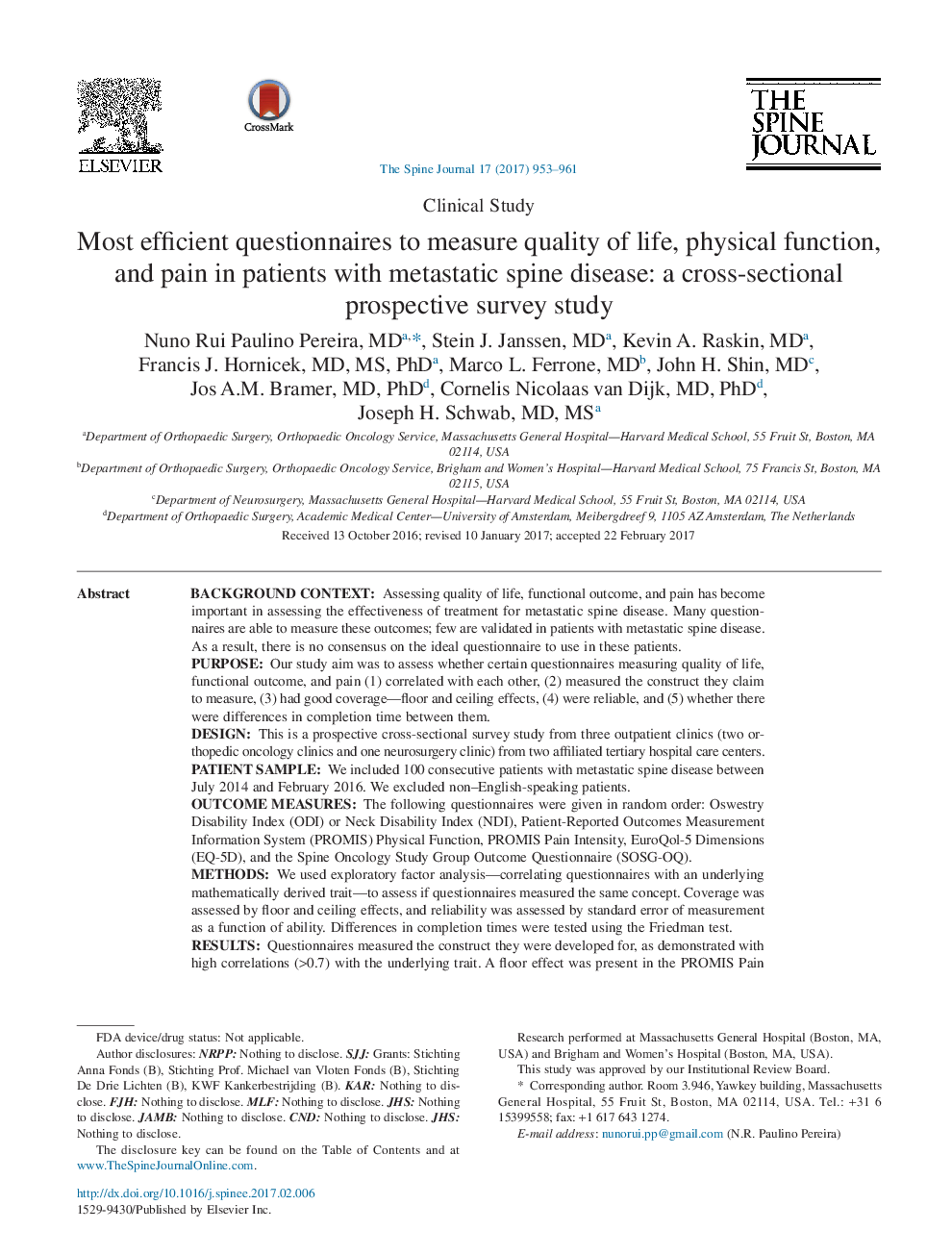| کد مقاله | کد نشریه | سال انتشار | مقاله انگلیسی | نسخه تمام متن |
|---|---|---|---|---|
| 5713073 | 1410995 | 2017 | 9 صفحه PDF | دانلود رایگان |
Background ContextAssessing quality of life, functional outcome, and pain has become important in assessing the effectiveness of treatment for metastatic spine disease. Many questionnaires are able to measure these outcomes; few are validated in patients with metastatic spine disease. As a result, there is no consensus on the ideal questionnaire to use in these patients.PurposeOur study aim was to assess whether certain questionnaires measuring quality of life, functional outcome, and pain (1) correlated with each other, (2) measured the construct they claim to measure, (3) had good coverage-floor and ceiling effects, (4) were reliable, and (5) whether there were differences in completion time between them.DesignThis is a prospective cross-sectional survey study from three outpatient clinics (two orthopedic oncology clinics and one neurosurgery clinic) from two affiliated tertiary hospital care centers.Patient SampleWe included 100 consecutive patients with metastatic spine disease between July 2014 and February 2016. We excluded non-English-speaking patients.Outcome MeasuresThe following questionnaires were given in random order: Oswestry Disability Index (ODI) or Neck Disability Index (NDI), Patient-Reported Outcomes Measurement Information System (PROMIS) Physical Function, PROMIS Pain Intensity, EuroQol-5 Dimensions (EQ-5D), and the Spine Oncology Study Group Outcome Questionnaire (SOSG-OQ).MethodsWe used exploratory factor analysis-correlating questionnaires with an underlying mathematically derived trait-to assess if questionnaires measured the same concept. Coverage was assessed by floor and ceiling effects, and reliability was assessed by standard error of measurement as a function of ability. Differences in completion times were tested using the Friedman test.ResultsQuestionnaires measured the construct they were developed for, as demonstrated with high correlations (>0.7) with the underlying trait. A floor effect was present in the PROMIS Pain Intensity (7.0%), ODI or NDI (4.0%), and the PROMIS Physical Function (1.0%) questionnaires. A ceiling effect was present in the EQ-5D questionnaire (6.0%). The SOSG-OQ had no floor or ceiling effect. The PROMIS Physical Function and PROMIS Pain Intensity proved to be the most reliable, whereas the EQ-5D was the least reliable. Completion time differed among questionnaires (p<.001) and was shortest for the PROMIS Pain Intensity (median 24 seconds) and PROMIS Physical Function (median 42 seconds).ConclusionsIn patients with metastatic spine disease, we recommend the SOSG-OQ for measuring quality of life, the PROMIS Physical Function for measuring physical function, and the PROMIS Pain Intensity for measuring pain.
Journal: The Spine Journal - Volume 17, Issue 7, July 2017, Pages 953-961
